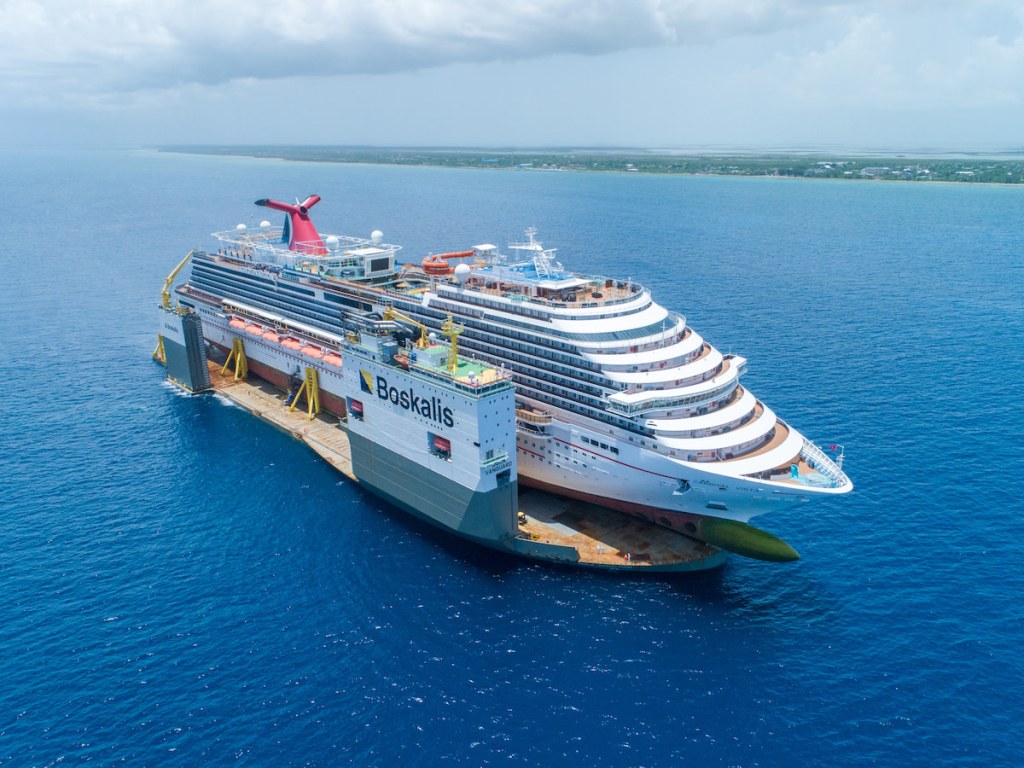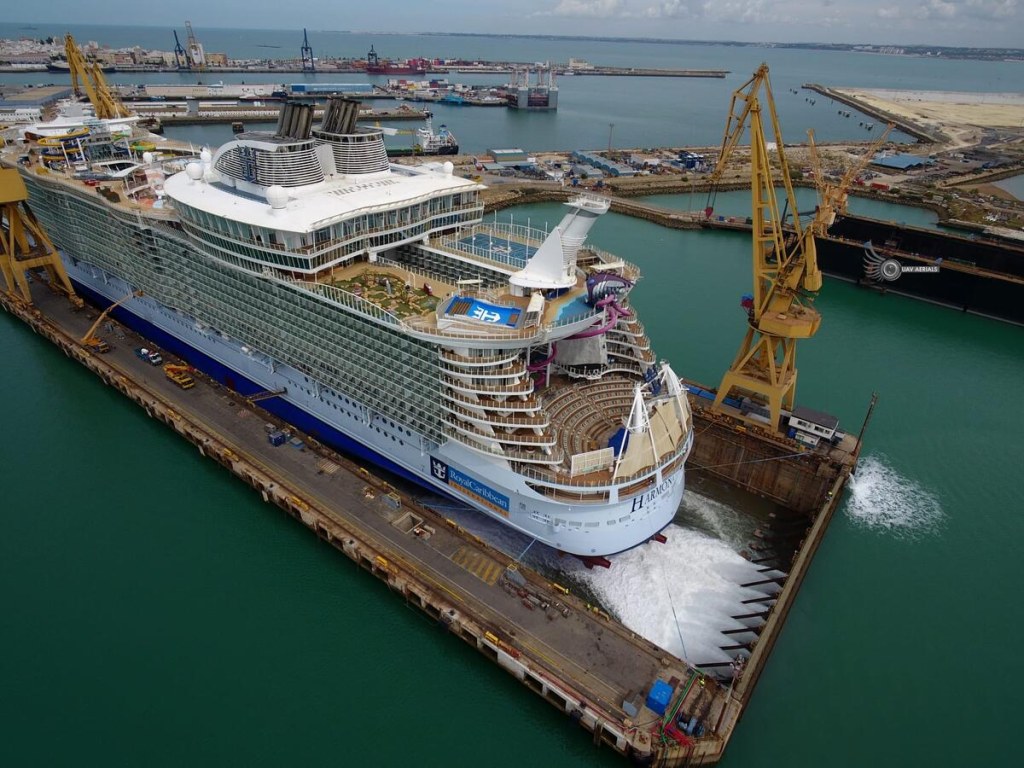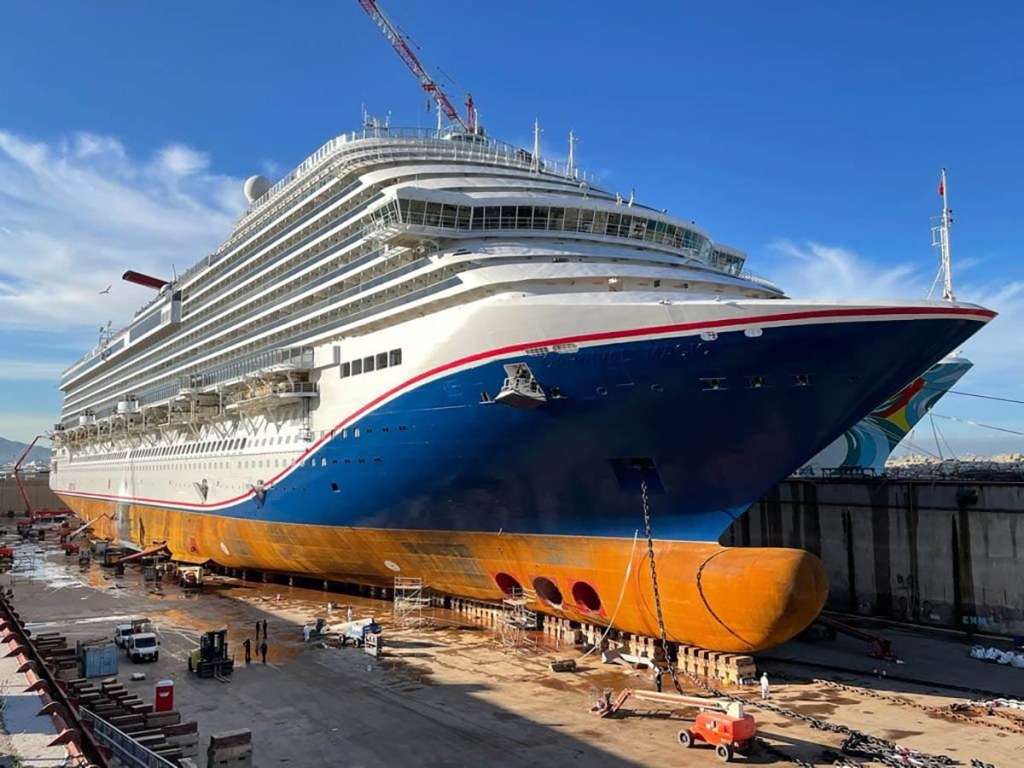Cruise Ship in Dry Dock
Introduction
Greetings, cruise ship enthusiasts! In this article, we will delve into the fascinating world of cruise ships in dry dock. Dry dock is an essential process in the life cycle of a cruise ship, where it undergoes maintenance, repairs, and renovations. This temporary resting place allows the ship to receive the care it needs to continue providing unforgettable experiences to its passengers. Join us as we explore the ins and outs of cruise ships in dry dock and uncover the secrets behind their immaculate appearances and impeccable performance.
What is a Cruise Ship in Dry Dock?
🛠️ A cruise ship in dry dock refers to a vessel that is taken out of the water and placed in a specially designed facility that allows for inspection, repair, and refurbishment. Dry docks are large structures that are flooded to accommodate the ship and then drained to expose its hull.
Who Conducts Dry Docking?

Image Source: soundingsonline.com
👨🔧 Dry docking is a collaborative effort between the cruise ship company and specialized shipyards that possess the necessary equipment and expertise. These shipyards are equipped with dry docks of various sizes to cater to different types of vessels, including cruise ships.
When is Dry Docking Required?
⚓ Cruise ships typically undergo dry docking every few years or according to a predetermined schedule set by the cruise line. The frequency of dry docking depends on various factors, such as the ship’s age, class, and the maintenance requirements determined by regulatory bodies.
Where Does Dry Docking Take Place?

Image Source: royalcaribbeanblog.com
🌊 Dry docking facilities are strategically located in ports around the world. These locations are chosen based on their proximity to popular cruise destinations, availability of skilled labor, and the necessary infrastructure to support the dry docking process.
Why is Dry Docking Important?
🚢 Dry docking plays a crucial role in maintaining the safety, durability, and aesthetic appeal of cruise ships. It allows for thorough inspections, repairs of any structural damage or mechanical issues, and the implementation of upgrades and renovations to enhance passenger experience.
How Does Dry Docking Work?

Image Source: cruisefever.net
⛵ The dry docking process begins with the ship sailing into the dry dock facility, which is then flooded to allow the vessel to enter. Once inside, the water is drained, revealing the ship’s hull and propellers. The ship remains dry for the duration of the maintenance and repair works, which can include sandblasting, repainting, replacing worn-out parts, and implementing technological advancements.
Advantages of Dry Docking
✅ 1. Extends the Lifespan: Dry docking helps extend the lifespan of cruise ships by addressing structural issues and preventing further deterioration over time.
✅ 2. Enhanced Safety: Regular dry docking ensures that safety systems and equipment are in optimal condition, minimizing risks to passengers and crew.
✅ 3. Improved Efficiency: Upgrades and renovations implemented during dry docking can enhance the ship’s efficiency, resulting in fuel savings and reduced environmental impact.
✅ 4. Enhanced Passenger Experience: Renovations and upgrades can include the addition of new amenities, improved cabins, and enhanced entertainment facilities, ultimately enhancing the overall passenger experience.
✅ 5. Compliance with Regulations: Dry docking allows for the inspection and compliance with regulations set by maritime authorities, ensuring that the ship meets all necessary safety and environmental standards.
Disadvantages of Dry Docking
❌ 1. Costly Process: Dry docking can be a significant financial undertaking, involving expenses for labor, materials, and the rental of the dry dock facility.
❌ 2. Downtime and Revenue Loss: When a cruise ship is in dry dock, it is unable to generate revenue through passenger bookings, resulting in temporary losses for the cruise line.
❌ 3. Disruption to Schedules: Dry docking can disrupt the cruise line’s schedules, leading to changes in itineraries or cancellations of planned voyages.
❌ 4. Limited Availability of Dry Docks: The availability of suitable dry dock facilities may pose challenges, especially during peak periods when multiple ships require maintenance simultaneously.
❌ 5. Potential Delays: Unforeseen issues or complications during the dry docking process can lead to delays in completing the necessary repairs or upgrades.
Frequently Asked Questions
Q: Is dry docking the same as a shipyard?
A: No, dry docking is a specific process that occurs within shipyards. Shipyards encompass a broader range of activities, including construction and repair of various types of vessels.
Q: How long does dry docking typically last?
A: The duration of dry docking varies depending on the scope of work required, but it can range from a few weeks to several months.
Q: Are passengers allowed on the ship during dry docking?
A: No, passengers are not allowed on the ship during the dry docking process due to safety regulations and the nature of the maintenance and repair works being carried out.
Q: Can dry docking be done at any time during the year?
A: Dry docking is typically scheduled during off-peak seasons to minimize disruptions to the cruise line’s itineraries and passenger bookings.
Q: Are there any risks involved in dry docking?
A: While dry docking is generally a safe process, there are inherent risks associated with working in a dry dock facility, such as falls, accidents, or exposure to hazardous substances. Stringent safety protocols are in place to mitigate these risks.
Conclusion
In conclusion, the process of dry docking is vital for the maintenance, repair, and renovation of cruise ships. By providing necessary inspections, repairs, and upgrades, dry docking ensures that cruise ships remain in top-notch condition, offering safe and enjoyable experiences for passengers. Despite the challenges and costs involved, the advantages of dry docking outweigh the disadvantages, making it an integral part of the cruise industry. So, the next time you embark on a cruise and marvel at the impeccable vessel, remember the behind-the-scenes work that takes place in the dry dock.
Final Remarks
Disclaimer: The information presented in this article is for informational purposes only. The process and specifics of dry docking may vary depending on the cruise ship company, shipyard, and other factors. Always refer to official sources and consult professionals for accurate and up-to-date information related to cruise ship dry docking.